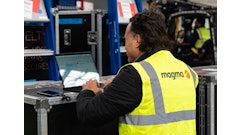
Add assortment planning to the list of pandemic-inspired strategic priorities making an impact in today’s market for food retailers and consumer packaged goods (CPG) companies.
When COVID-19 happened, swift and unexpected shortages of everything from paper towels to hand sanitizer had the industry scrambling to re-allocate and repackage commercial-grade products for consumer use. Then #TikTokMadeMeBuyIT left food retailers and CPGs scrambling to restock everything from lipstick to feta cheese. Now, with continued inflationary pressure pushing more price-conscious consumers to trade in premium brands for greater savings, retailers and CPGs across the industry are looking for greater flexibility in their product mix to help them compete.
Major operators are seeking cooperation from their suppliers to help lower prices. On both sides of the ecosystem, such moves are putting an even sharper focus on the critical need to develop agile product strategies. As we look ahead, expect more food retailers and CPG companies to look deeper at their product mix offering the right blend of products and packaging with price points responsive enough to meet evolving consumer demands. Companies will be doing more robust inventory planning from channel to time period and beyond to figure out the right product mix for proper revenue growth management.
The delicate dance between pricing and assortment has emerged as the industry’s secret weapon for capturing market share and protecting profitability amid shifting conditions. With that in mind the following are a few things to consider as part of any assortment strategy:
- Why it matters. Analyzing product mix helps companies answer critical questions around optimizing profits. Whether by tinkering with size, price or geographic channel. IRI describes price pack architecture as the ability to provide consumers with both a product mix and pricing strategy that meets their needs and that also enhances a brand's value proposition.
- Aligning finance, sales and merchandising. Coming to an agreement on product strategy from product lines to pricing and packaging is critical. And even though the end goals are the same, departmental leaders from finance and sales to merchandising often come at it from a different perspective. For finance, it’s about streamlining offerings to optimize costs and margins. For sales leaders, it’s about coming up with offerings that will excite and entice the end buyer. Merchandise leaders, meanwhile, want to reduce stockouts and ensure the availability of key items. That’s why it’s important to collaborate on a single cohesive plan, where key company data can be combined with external trends and market signals to provide a more accurate demand forecast. This model should be built to answer key questions around which product lines to carry when, how many SKUs to have in each line and at the price for those SKUs, how to market the lines to drive demand, etc. Modeling plans based on these discussions can help get all stakeholders in line.
- Driving demand to drive impact. Food retailers and CPGs need to remember the active role they can and should be playing when it comes to shaping consumer demand. With their fingers on the pulse of what is attracting shoppers, food retailers are becoming more selective about what they buy and more strategic about what they push through certain channels. They are using sophisticated merchandise data, demand-sensing capabilities and cloud-based planning tools in order to stay on top of trends, maintain nimble inventory strategies and ultimately fine-tune their product mix across geographies. Similarly, forward-thinking CPG companies understand they must also get smart about the intersection of consumer shopping behavior and the product mix they are offering. As a result, more real-time forecasting, joint planning and demand-sensing tools are being leveraged across the food industry to help food retailers and CPGs maintain agile assortment strategies.
What’s ahead
It’s clear that assortment and inventory planning has become an intricate and delicate dance for food retailers and CPGs who must manage shifting consumer expectations, price swings and a general sense of market uncertainty. A nimble and data-driven product mix strategy, one that has tight alignment and buy-in across departments can help businesses operate more effectively and compete more strategically in this rapidly evolving landscape.

















